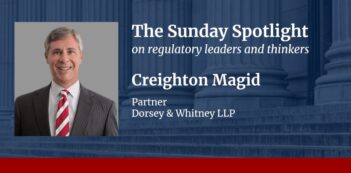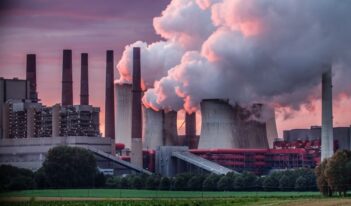
Sound policy requires a deeper understanding of the interplay between regulation and unemployment.
Despite noisy political claims to the contrary, the weight of the evidence suggests that regulation has a small impact on the total number of jobs. Still, regulation is bound to have some effect on who has jobs, what kinds of jobs they have, and where those jobs can be found. How much should we care about that?
In a new article, Sidney A. Shapiro and Robert R. M. Verchick argue that environmentalists should devote far more attention to job loss. Their concern about job loss is well taken. Before responding to the issue, however, we need a better understanding of the extent of job loss due to regulation and a clearer map of the resulting types of harms.
To begin, we need to consider three kinds of job loss: (1) an industry has fewer employees over time, (2) individual workers are laid off, and (3) a community loses its employment base. Category one is the broadest—reduced hiring to fill vacancies and scattered layoffs spread across many communities.
Layoffs can have serious impacts on individuals. As Jonathan Masur and Eric Posner have argued, strong evidence indicates that long-term unemployment can have serious long-lasting effects, which is a regulatory cost that deserves more attention. For this reason, Masur and Posner argue that cost-benefit analysis should give it special attention.
Of course, job loss is a much broader issue than regulation: Changes in international trade, new technologies, changes in consumer taste, and even regulatory rollbacks can cause layoffs. Still, the fact that a problem is broader than regulation is no excuse for regulators to ignore their potential role in it. And yet, it is very hard to know how often regulations do cause layoffs because the firms that shut down in the face of regulatory change are likely to have had other problems as well.
Appalachian coal mining is a classic example, with the main reasons for declining employment being automation, reduced electricity demand, cheaper Western coal, cheap natural gas, and, finally, regulation. How many actual layoffs are attributable to regulations? We do not know, except that these layoffs are probably at mines that were teetering on the edge of closure anyway. Nevertheless, in the event that regulations do result in long-term job loss, that loss should concern us.
When jobs are lost, it is not only individual workers who suffer, but also the communities in which they live, particularly in areas that depend heavily on a single industry. This kind of job loss is distinct from the layoff problem: Harm to the community can occur even when no worker is ever laid off if employers stop hiring and allow the workforce to shrink by attrition. Over time, the community’s employment base shrinks and, if people do not relocate, unemployment and poverty can increase.
Again, identifying the role of regulation in causing this economic plight, as opposed to economic factors, is problematic. A policy issue also exists: It is unclear whether the right response is to try to create new jobs in the same places or to make it easier for people to move elsewhere. There are genuine tradeoffs in choosing whether to support languishing communities or to help individuals find new opportunities elsewhere.
In favor of maintaining existing communities, we can point to the value of traditional communities and the plight of those left behind when the more ambitious—often younger—members of the community leave. On the other hand, propping up communities that have lost their economic bases is expensive. Funds used to do so could be used for other purposes. Moreover, there is also value to dynamism and growth, which diminishes to the extent we devote our efforts to economic development efforts in struggling communities.
A first step in thinking about these issues would be to try to get a better quantitative handle on job impacts. For instance, one study found that complete decarbonization of the U.S. economy will create 5.9 million jobs over a 40-year period, but it will also result in the loss of about 3.9 million jobs in fossil-fuel-related industries. The study estimates that there will bigger shifts in some states than others, with some states ending up as net losers. Of course, this is an extreme scenario because most people consider it unlikely that all use of fossil fuels will be eliminated within four decades. Even so, it is notable that within such a time period the expected job loss would amount to about 100,000 per year.
For comparison purposes, the number of jobs lost nationwide in the third quarter of 2017 was 7.4 million, which would equate to about 30 million per year. Thus, at those levels, complete decarbonization would increase job loss by about 0.3 percent annually. This cost could still be a real concern if many of the jobs are lost through layoffs or if communities suffer long-term economic depression. But it is difficult to be sure whether job losses will involve layoffs or attrition, or to be sure how many people will move or find employment in other industries.
As a predicate for policy responses, we need more data and better modeling of trends in long-term unemployment and community-by-community job loss. Distinguishing more sharply among various ways that jobs can disappear and their varying impacts on individuals and communities would also be useful.
The problem of job loss has causes—and needs solutions—that go far beyond environmental protection. But in the absence of those larger solutions, the possibility of regulation-induced unemployment is something that environmental regulators and advocates should keep in mind. And so should deregulators. After all, loosening regulations to allow more fracking, for example, would only mean cheaper natural gas that further drives out coal and contributes to still more job loss in the coal sector.
To respond to the issue of lost jobs effectively, we need better information and a fuller debate about policy options.
This essay is part of a six-part series, entitled Social Justice in a Green Economy.




